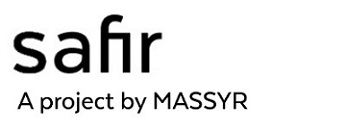Guide for creating an Artist Portfolio
A portfolio is crucial for professional artists to showcase their best work and demonstrate their ability and creativity. A well-composed portfolio can lead to many opportunities such as exhibitions or residencies, so it is highly important that a lot of care goes into compiling your work into a professional portfolio.
Begin with your artist biography. The biography tells the story of your resume in the third person, and can be accompanied by a photograph of you (Click here for tips on writing your artist biography). Next is your resume or CV. In addition to personal details and education, the CV should list all relevant artistic accomplishments, such as exhibition showings, residencies, or awards.Click here for help writing a comprehensive CV. Keep the written part of the portfolio brief, since the main focus is ultimately on your artwork.
When it comes to deciding which art pieces to include, choose only the very best of your recent work. The pieces should show your abilities and unique style as an artist. Around ten to twenty original pieces are enough, but remember that quality is always more important than quantity: don’t add mediocre pieces to your portfolio simply to increase its size.It’s also important to update your portfolio regularly since it is often the most recent work that is of interest.
Once you have chosen works you are proud of, photograph them with a professional camera. Don’t use flash if it will make the pieces look very different than they do in reality – remember that your portfolio needs to be the best representation of you as an artist! In addition, make sure the pieces are free from any smudges or fingerprints.
If your pieces follow a specific theme, are part of a series, or were part of the same exhibition, group them together and precede them with an Artist’s Statement. The Artist’s Statement is approximately 500 words about what inspires your work, and is helpful for a viewer to understand what your art is about. Visit this site for tips on writing an artist’s statement and for examples of artist’s statements.
Label each piece with a title and a date. This makes it easier for the viewer to identify each work. You may also include sketches or studies that show the beginning of your process. However, this does depend on where the portfolio is being submitted: Galleries typically want to see finished works, while some art programs and residencies are interested in seeing the development of your pieces.
To recap, the recommended order of items in a portfolio is
- Artist Biography
- CV/Resume
- Artist’s Statement
- Art pieces.
Repeat 3 and 4 to separate between different series or themes in your artwork.
Put everything together in a neat, professional binder that keeps it all together and is easy to flick through. However, physical portfolios are often not the most convenient in the international arts scene, and more and more entities are choosing to go digital. You can make a digital portfolio by compiling all of the above into a PDF document that can be emailed or uploaded onto a USB or CD. There are also many online platforms for uploading and sharing portfolios, and having a personal website is a good idea as well.
It is helpful to ask a friend or colleague for an objective opinion about your finished portfolio. An outside source can identify spelling, grammar and formatting errors you may have missed, and can also provide a fresh perspective on the overall look of the portfolio and can give you an idea of the impression it makes on the viewer. The internet is also full of great portfolios, so look for them if you’re in need of some inspiration!





